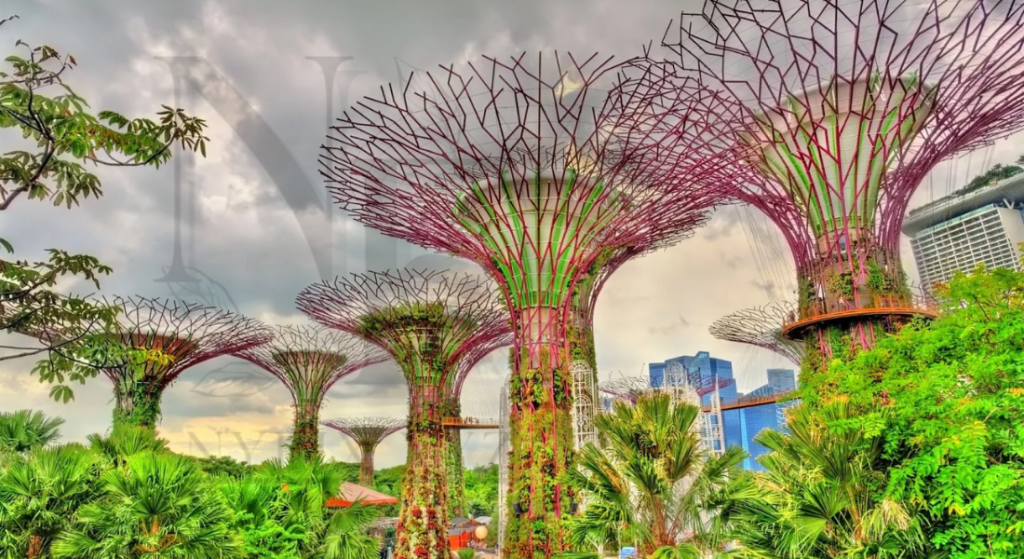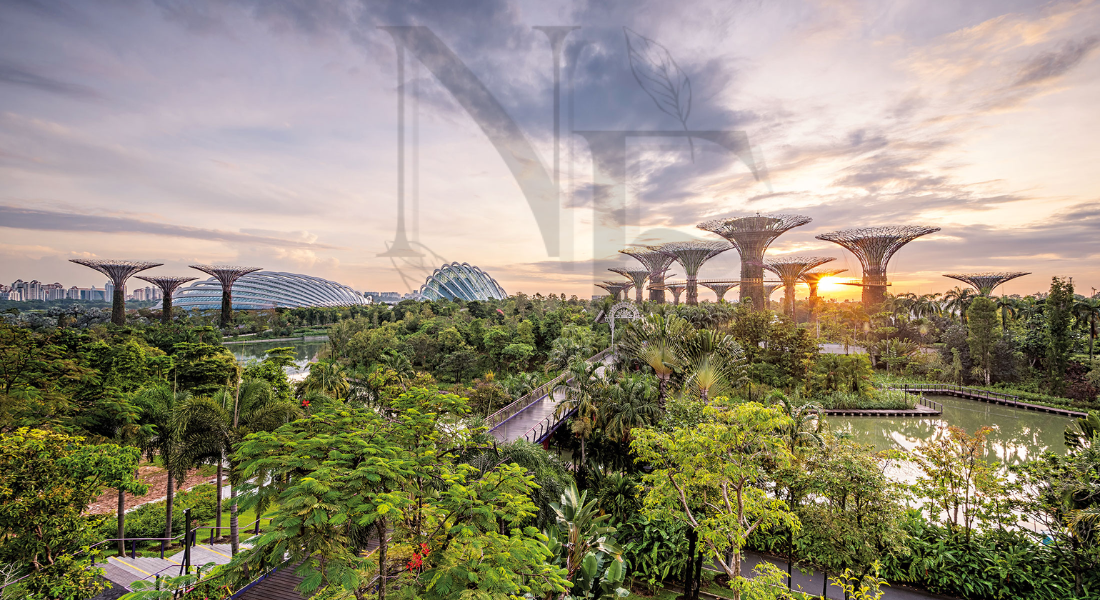What is Urban Jungle Real Estate?
In today’s fast-paced urban environments, the need for green spaces and a connection to nature has become increasingly apparent. Urban jungle real estate is a groundbreaking trend that merges the concrete jungle with lush, tropical vegetation, creating living spaces where nature thrives alongside modern architecture. With more people seeking ways to improve their quality of life, the concept of urban jungles in real estate has captured the imagination of designers, developers, and homeowners alike.
This concept refers to properties that integrate extensive greenery into the urban environment, such as green roofs, vertical gardens, indoor plant-filled spaces, and outdoor garden areas. Urban jungle real estate aims to provide a haven for residents, offering the benefits of nature while being nestled within the heart of a bustling city.
In this comprehensive guide, we will explore the evolution of urban jungle real estate, how it enhances well-being and property value, and why this trend is shaping the future of urban living. Let’s dive into how combining nature with architecture can revolutionize the way we live in cities.
The Evolution of Urban Jungle Real Estate
The rise of urban jungle real estate can be attributed to several factors, including the increasing urbanization of cities, growing environmental concerns, and a desire for improved quality of life. As cities become more crowded, the balance between natural spaces and urban infrastructure has been lost, leading to a lack of greenery and open spaces. This has resulted in a need for solutions that bring nature back into urban areas in a meaningful and sustainable way.
The term “urban jungle” originally referred to the overgrown, dense vegetation seen in tropical rainforests. However, in the context of real estate, it refers to the practice of integrating large amounts of plant life—whether through vertical gardens, living walls, or other green features—into urban properties. The idea is to create a sense of peace, tranquility, and connection to nature, even within densely populated urban centers.
Several trends have contributed to the growing popularity of urban jungle real estate:
- Sustainability and Green Architecture: As awareness of environmental issues like climate change and pollution grows, there’s a shift towards eco-friendly and sustainable building practices. Urban jungle real estate is seen as an ideal solution to combat air pollution, reduce the urban heat island effect, and promote biodiversity.
- Health and Well-being: There is an increasing body of research that shows the positive impact of nature on mental and physical health. Urban dwellers, often isolated from natural environments, are increasingly seeking homes that offer the calming effects of greenery.
- Aesthetic Appeal: The aesthetic qualities of an urban jungle—lush greenery, colorful plants, and organic design elements—are incredibly appealing. Homeowners and tenants are eager to live in spaces that offer beauty and serenity amidst the hustle and bustle of city life.
The Key Features of Urban Jungle Real Estate
What makes urban jungle real estate stand out? Below are some of the key features that define this trend:
1. Vertical Gardens and Green Walls
One of the most striking elements of urban jungle real estate is the use of vertical gardens or living walls. These gardens are mounted on the sides of buildings or walls within homes and offices, creating a stunning display of plants and flowers. These walls not only add aesthetic value but also help improve air quality by filtering pollutants and producing oxygen.
Vertical gardens are particularly beneficial in cities where space is limited, allowing for the addition of greenery without taking up valuable ground space. In addition to plants, these walls may include integrated irrigation systems that make maintenance easier and more efficient.
2. Green Roofs and Terraces
Green roofs, or living roofs, are another common feature in urban jungle real estate. These are roofs that are partially or completely covered with vegetation, helping to reduce the heat island effect in cities. Green roofs also provide insulation for buildings, reducing energy costs and improving the building’s environmental footprint.
Additionally, many urban properties feature terraces and rooftop gardens, offering residents an opportunity to enjoy nature in private outdoor spaces. These areas may be designed with plant beds, seating areas, and even small ponds, offering a retreat from the noise of the city below.
3. Indoor Plants and Biophilic Design
Biophilic design is an architectural and interior design concept that seeks to connect building occupants with nature. In urban jungle real estate, this concept is brought to life through the use of indoor plants, natural materials, and open, airy spaces. Large houseplants, hanging gardens, and botanical-inspired decor are commonly seen in these properties.
Indoor plants not only enhance the aesthetic of a space but also improve air quality by filtering out toxins and increasing humidity levels. The greenery promotes a calm, relaxed atmosphere, which is especially valuable in stressful urban environments.
4. Sustainable Landscaping
Sustainability plays a key role in the development of urban jungle real estate. Landscaping in these spaces typically includes native plant species, which require less water and maintenance, and drought-resistant plants that thrive in urban environments. The goal is to create green spaces that are not only visually appealing but also environmentally sustainable.
In many urban jungle projects, there is an emphasis on creating biodiverse gardens that support local wildlife, such as bees, birds, and butterflies. These spaces serve as sanctuaries for nature within urban areas, helping to boost biodiversity in cities.
5. Smart Technology Integration
Urban jungle real estate often incorporates smart technology that helps residents manage and maintain their green spaces more efficiently. For example, automated irrigation systems, humidity control devices, and smart lighting can all be used to optimize the growth of plants and reduce water consumption. This integration of technology with nature creates a seamless, sustainable living experience.
The Benefits of Urban Jungle Real Estate
Investing in urban jungle real estate offers several key benefits, both for property owners and the community at large. Let’s explore some of the advantages:
1. Improved Health and Well-being
Living in spaces filled with greenery has been shown to have numerous health benefits. Research suggests that being surrounded by plants can lower stress levels, improve air quality, and even increase productivity. In cities where people are often disconnected from nature, the incorporation of urban jungles into real estate offers a much-needed oasis.
The presence of plants in the home or office can boost mood, enhance creativity, and help improve overall mental health. Additionally, green spaces promote physical health by encouraging outdoor activities like gardening, walking, or yoga in peaceful surroundings.

2. Increased Property Value
Properties that feature urban jungle elements, such as green roofs or vertical gardens, tend to have higher value and appeal. As more people become interested in eco-friendly living, homes that incorporate greenery into their design are becoming highly sought after. Urban jungle features can make a property stand out in a competitive real estate market, particularly in cities where green spaces are scarce.
Moreover, the integration of nature into urban spaces can improve the overall aesthetics of a neighborhood, making it a more attractive place to live. This can drive up demand, increasing property values for both residential and commercial real estate.
3. Sustainability and Environmental Benefits
Urban jungle real estate plays an important role in promoting sustainability. The incorporation of greenery into buildings helps absorb carbon dioxide and produce oxygen, reducing the urban carbon footprint. Green roofs, for example, improve insulation, reducing the need for artificial heating and cooling, which leads to lower energy consumption and reduced greenhouse gas emissions.
These features also help mitigate environmental challenges in urban areas, such as the heat island effect, which occurs when cities become significantly warmer than surrounding rural areas due to extensive concrete and asphalt surfaces. By adding greenery, urban jungle developments can lower temperatures, improve air quality, and contribute to the overall well-being of the ecosystem.
4. Connection to Nature in Urban Areas
As cities continue to grow, many urban dwellers face a lack of access to green spaces. Urban jungle real estate allows people to live and work in nature-filled environments, even if they are surrounded by concrete buildings and busy streets. This connection to nature is essential for mental clarity, stress reduction, and overall happiness.
Urban jungles create a sense of tranquility and peacefulness, offering a retreat from the noise and chaos of city life. Whether it’s a small apartment with indoor plants or a sprawling estate with rooftop gardens, the presence of greenery fosters a sense of harmony and balance in urban environments.
The Future of Urban Jungle Real Estate
The concept of urban jungle real estate is not just a passing trend; it is a glimpse into the future of how cities will evolve. As urbanization continues, architects and developers will increasingly incorporate greenery into their designs, creating more sustainable, healthy, and beautiful urban spaces. With more people recognizing the importance of nature for well-being, urban jungle real estate is expected to grow in popularity and importance.
The future of real estate may very well be a place where urban living and nature coexist harmoniously, offering a new model for city living that is both environmentally conscious and deeply connected to the natural world.
Conclusion: The Appeal of Urban Jungle Real Estate
Urban jungle real estate offers a unique and forward-thinking approach to modern living. By integrating nature into urban spaces, these properties provide a healthier, more sustainable, and aesthetically pleasing alternative to traditional city living. Whether it’s through lush green roofs, vertical gardens, or biophilic interior designs, urban jungle real estate is transforming the way we think about urban spaces.
As cities continue to grow and evolve, the demand for green, sustainable living spaces will only increase. For anyone looking to experience the best of both worlds—nature and modern urban life—urban jungle real estate represents the perfect blend of these two powerful forces. Embrace nature in the city and discover the many benefits that urban jungle real estate has to offer.
